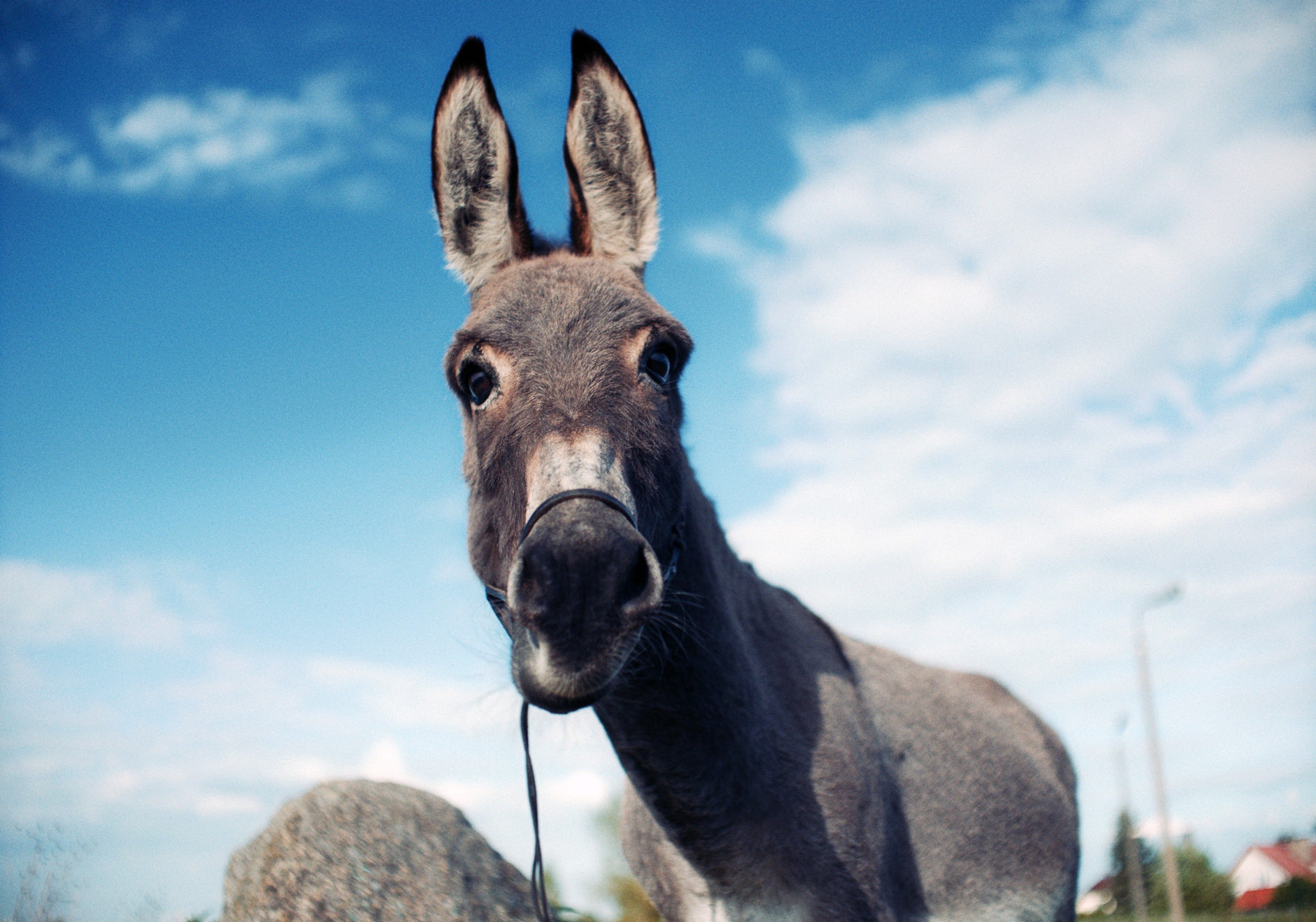Films featuring animals as screen filled protagonists, often in an imperfect, callous human world, have been made before. There was Robert Bresson’s 1966 Au Hasard Balthazar, which introduced audiences to a saintly donkey subject to the terrible things human beings are so often prone to inflict.
In recent times, the documentary black-and-white film Gunda (2020), directed by Victor Kossakovsky (executive producer Joaquin Phoenix), stripped of human dialogue, featured the farm life of an impressively large sow and her piglets. To their lives were added cows and a chicken with one leg. In such a film, livestock are seen as breathing, living creatures; they are not mere units of stock, destined for the packet and table. It is a film stunningly free of didactic hectoring or moral scolding.
EO, a film by Jerzy Skolimowski, that seasoned though less known member of the Polish New Wave, which included such busting, big hitters as Andrzej Wajda and Roman Polanski, pays tribute to Bresson’s work. At the very least, the same animal of biblical lore features. It certainly has gone down well with some of the critics, winning a nomination for Best International Feature Film and netting the Jury Prize at the Cannes Film Festival in 2022.
Interestingly enough, this particular animal is very much in cinematic vogue: Jenny, the miniature donkey in The Banshees of Inisherin, has made something of a splash. Jenny was even featured alongside the Oscars host Jimmy Kimmel at this year’s events. “Not only is she an actor,” the humourless Kimmel strained, “she’s a certified emotional support donkey – or at least that’s what we told the airline to get her on the plane from Ireland.”
Skolimowski’s inspiration for selecting the donkey arose from an encounter in Sicily, where he and his wife and collaborator Ewa Piaskowska, spend their winters. At a village Nativity, he noted “an incredible cacophony – chickens, geese, pigs, goats … In the very far corner, I saw those famous ears”.
The donkey, despite moving its startlingly parallel ears, remained silent. It was, according to the director, “like a witness on the side. I came very close and I looked at his eyes – next time you see a donkey, please notice the enormous eyes. They had this very specific melancholic look – not being involved, but looking with a distance and maybe some philosophical reflection.”
In The Economist, Skolimowski is reported regarding donkeys as “extremely intelligent animals and very sensitive”. He condemns industrial farming as “torture”, rightly deserving a ban. Perhaps inevitably, vegetarianism gains appeal through EO, capturing hearts and moving conscience. Half of the crew involved in the filming swore off meat by its end. Both Skolimowski and Piaskowska reduced their own meat consumption.
Where Bresson’s ass is village-bound and passed around its various residents, Skolimowski’s donkey is involuntarily restless, beginning his adventures from a doomed circus in Poland which must let its animals go for reasons of legislation and protest. There, he is much loved by Magda (Sandra Drzymalska), who performs under the circus name Kasandra, his shield against savagery.
EO becomes a witness, something like a fauna-directed camera, finding himself in the company of animals awaiting industrial slaughter, but also journeying through forests and environs populated by free creatures. There are even Jewish graves in a reminder of the Holocaust, that most conspicuous example of centralised and orchestrated killing.
The film is stark, pared back, though enriched by splashes of colour sequences that suggest imminent danger. The mesmerising, head throbbing soundtrack enhances the sense that harm lurks. EO, like Bresson’s Balthazar, finds himself in manifold situations of neglect, betrayal and brutality. He is beaten up by football hooligans who believe their team lost a match because of his braying. A black-market flesh trader attempts to sell him for salami. A dissolute aristocrat prone to gambling befriends him while speaking of his love of meat, including that of donkey.
While eschewing sentimentality, Skolimowski does not shy away from moments of tenderness. After leaving the circus, EO finds himself in an animal sanctuary, where he delights children. At one point, at a mayoral opening, he is garlanded with carrots.
At the hands of humans, animals suffer cruelty; but EO also shows us that humans, in tried-and-true sadistic fashion, are masters of inflicting harm upon themselves. The flesh-trader offers food to a migrant refugee in clumsy fashion, only to have his life savagely concluded. All the time this sequence unfolds, the protagonist waits with his equine companions fated for the knackery.
Skolimowski leaves us tantalised about the perspective of EO. This brings to mind the dilemma put forth by the philosopher, Thomas Nagel, who wondered, famously, what it was like to be a bat. The film, at points, suggests that EO is not immune to reminiscing, notably about the touch of Magda who loved him so, her voice echoing as emotive balm, encouragement and assurance. But we are not necessarily any the wiser for it. One thing we do know: the director misses him.




